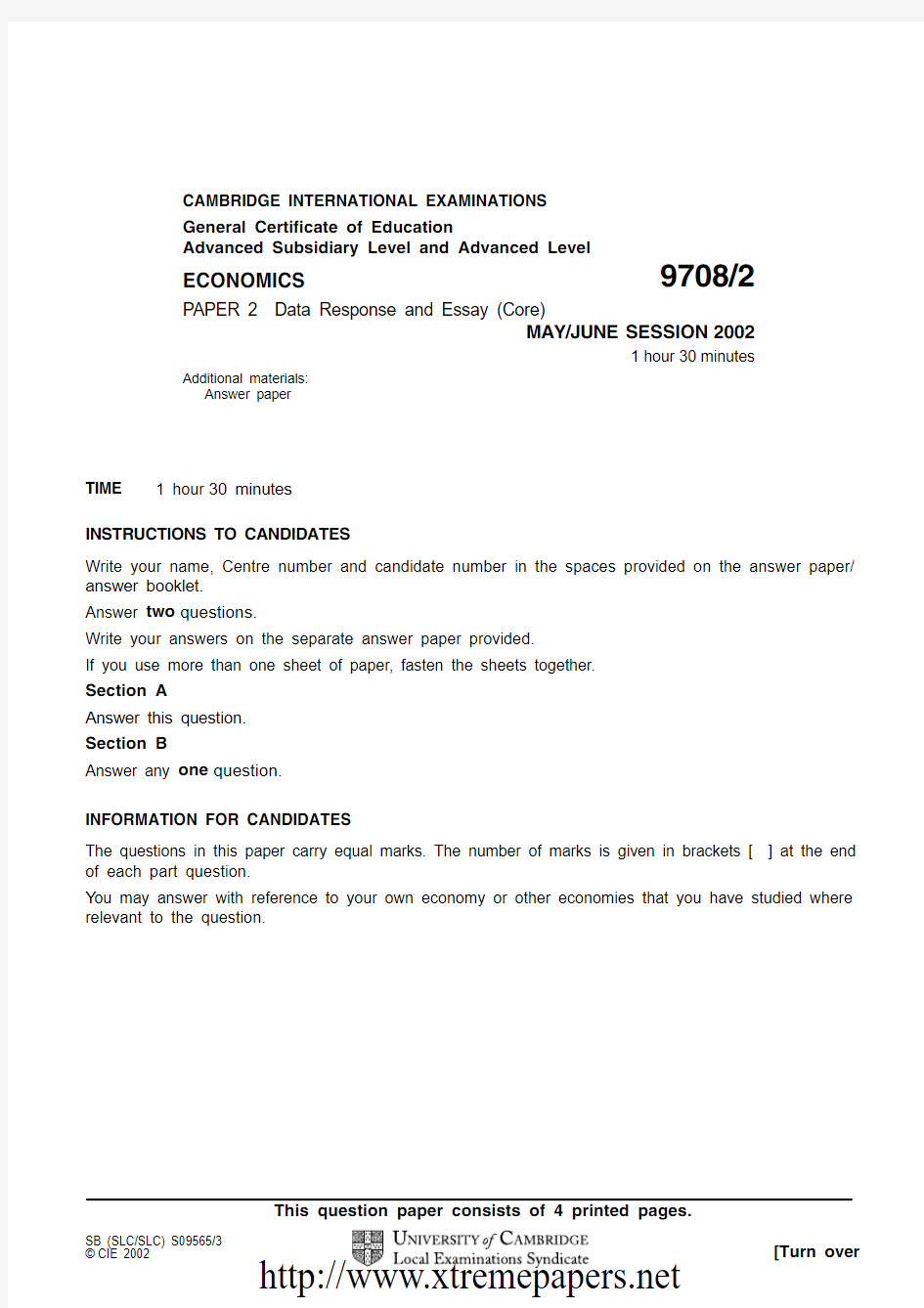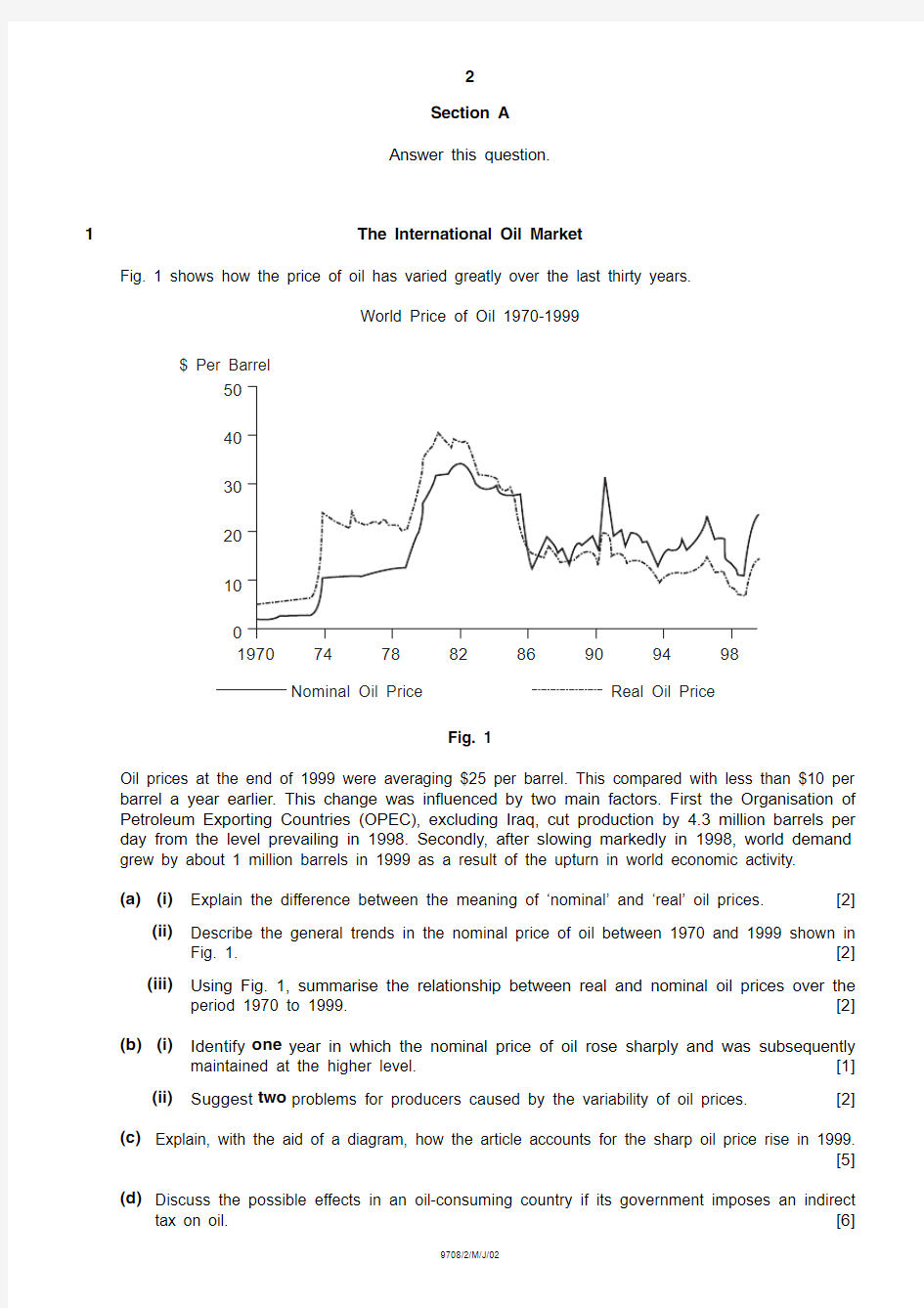

CAMBRIDGE INTERNATIONAL EXAMINATIONS
General Certificate of Education
Advanced Subsidiary Level and Advanced Level
ECONOMICS9708/2
PAPER 2 Data Response and Essay (Core)
MAY/JUNE SESSION2002
1hour30minutes
Additional materials:
Answer paper
TIME 1 hour30 minutes
INSTRUCTIONS TO CANDIDATES
Write your name, Centre number and candidate number in the spaces provided on the answer paper/ answer booklet.
Answer two questions.
Write your answers on the separate answer paper provided.
If you use more than one sheet of paper, fasten the sheets together.
Section A
Answer this question.
Section B
Answer any one question.
INFORMATION FOR CANDIDATES
The questions in this paper carry equal marks. The number of marks is given in brackets [ ] at the end of each part question.
Y ou may answer with reference to your own economy or other economies that you have studied where relevant to the question.
Answer this question.
1The International Oil Market
Fig. 1 shows how the price of oil has varied greatly over the last thirty years.
World Price of Oil 1970-1999
Fig. 1
Oil prices at the end of 1999 were averaging $25 per barrel. This compared with less than $10 per barrel a year earlier. This change was influenced by two main factors. First the Organisation of Petroleum Exporting Countries (OPEC), excluding Iraq, cut production by 4.3 million barrels per day from the level prevailing in 1998. Secondly, after slowing markedly in 1998, world demand grew by about 1 million barrels in 1999 as a result of the upturn in world economic activity.
(a)(i)
Explain the difference between the meaning of ‘nominal’ and ‘real’ oil prices.[2](ii)
Describe the general trends in the nominal price of oil between 1970 and 1999 shown in Fig. 1.[2](iii)
Using Fig. 1, summarise the relationship between real and nominal oil prices over the period 1970 to 1999.[2](b)(i)
Identify one year in which the nominal price of oil rose sharply and was subsequently maintained at the higher level.[1](ii)Suggest two problems for producers caused by the variability of oil prices.[2](c)Explain, with the aid of a diagram, how the article accounts for the sharp oil price rise in 1999.
[5]
(d)Discuss the possible effects in an oil-consuming country if its government imposes an indirect
tax on oil.[6]
50
40
30
20
10
1970747882869094
98$ Per Barrel Nominal Oil Price
Real Oil Price
Answer one question.
2(a)Explain, with examples, the meaning of private costs and external costs.[8]
(b)Discuss the role that cost-benefit analysis can play in government economic policy making.
[12] 3(a)Explain the methods that a government might use to protect its domestic industries from foreign competition.[8]
(b)Discuss whether trade protection can ever be justified.[12] 4(a)Explain why a country may experience a persistent rise in its general price level.[8]
(b)Discuss why reducing inflation is often the most important task for a government.[12]
Copyright Acknowledgement:
Question 1Fig. 1 from Barclays Economic Review, first quarter 2000, page 13, Barclays Bank